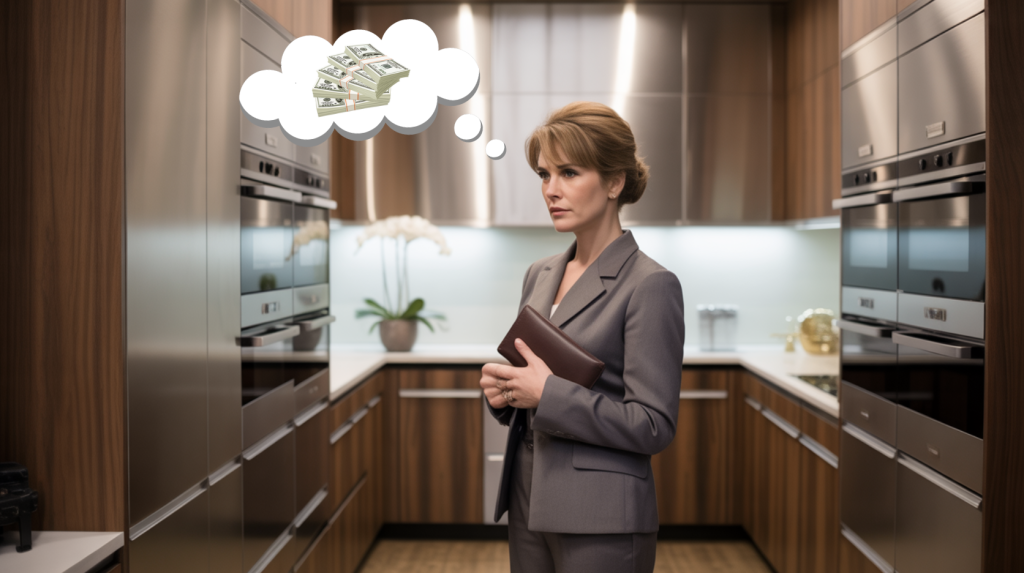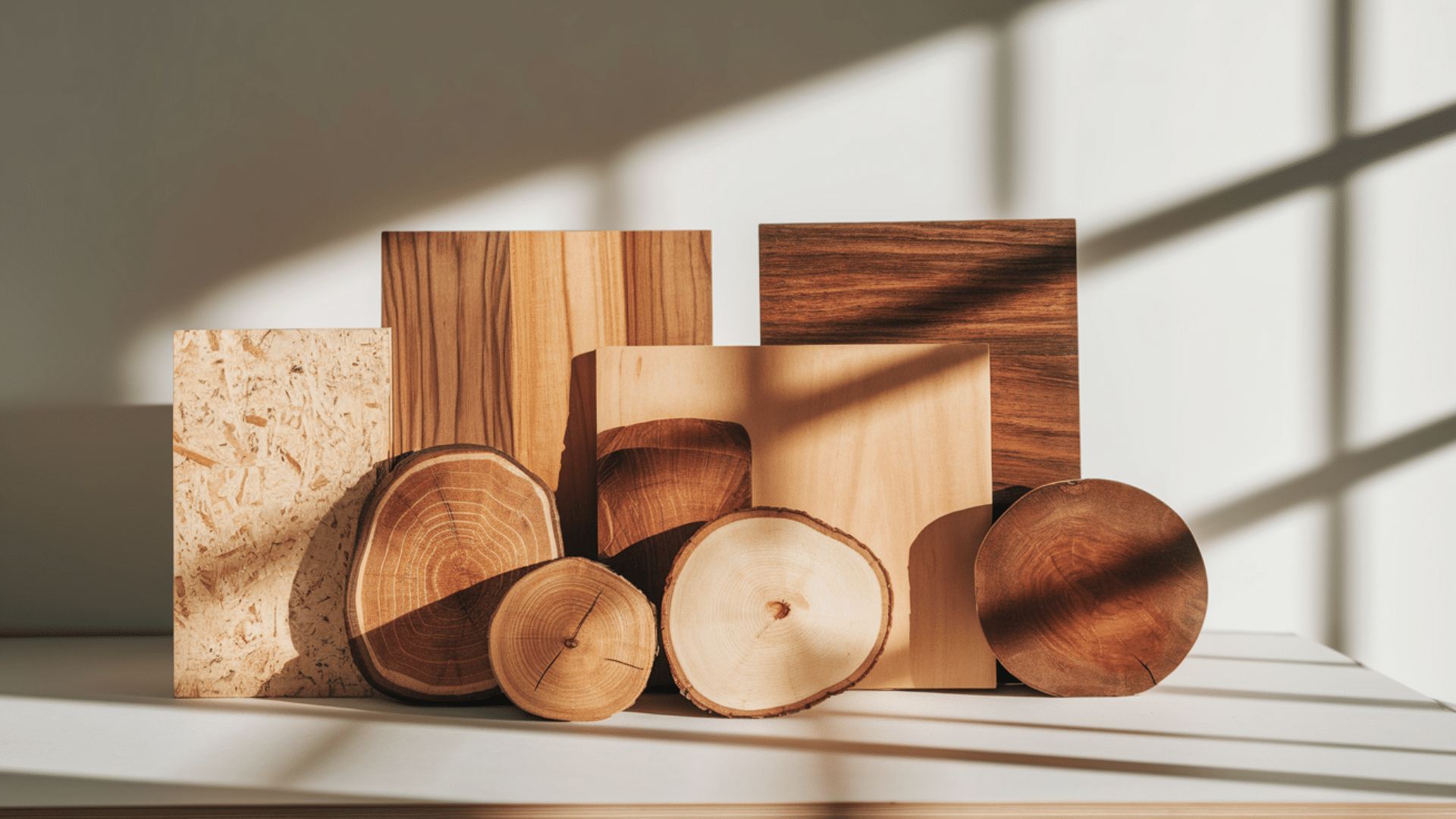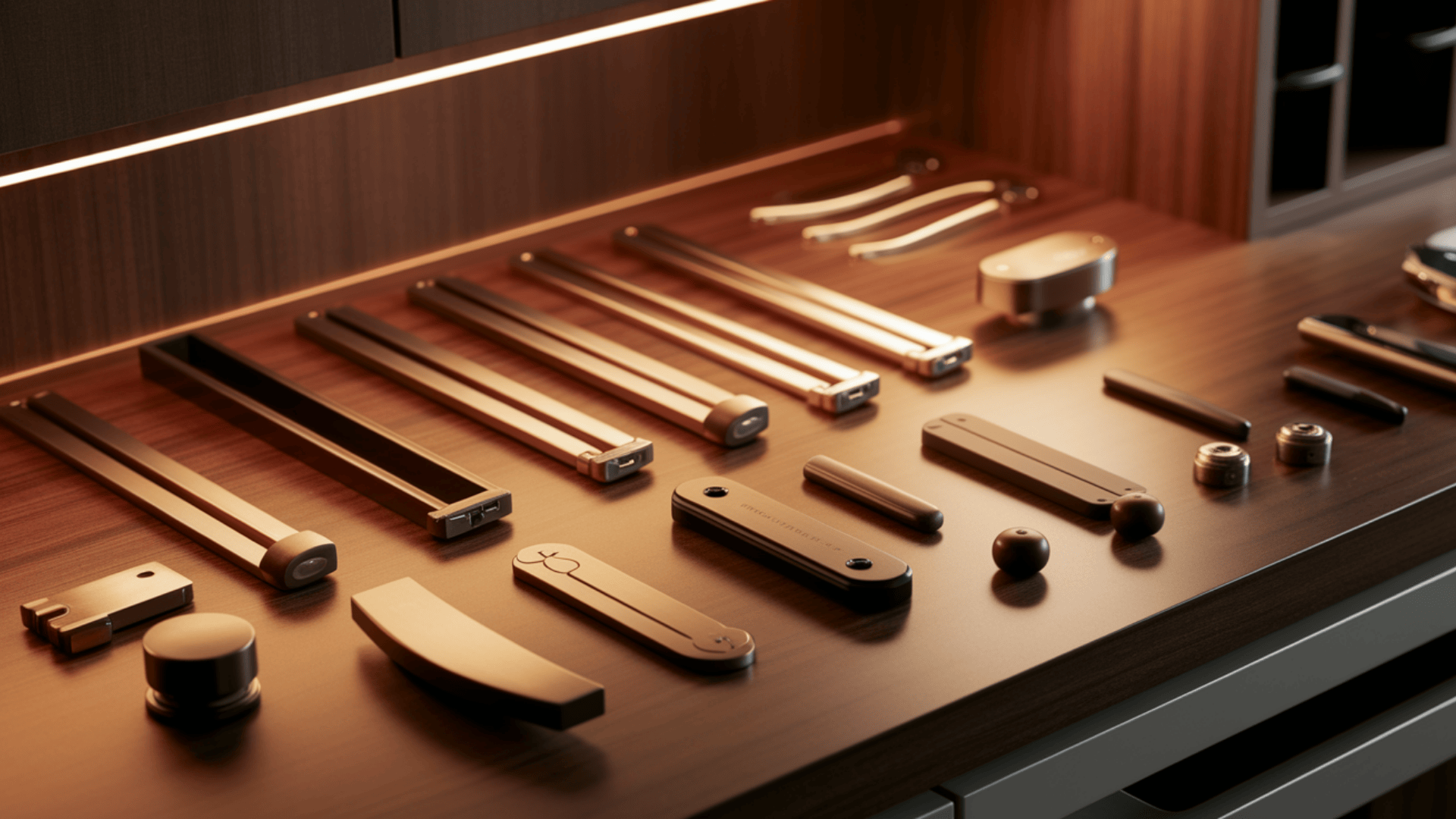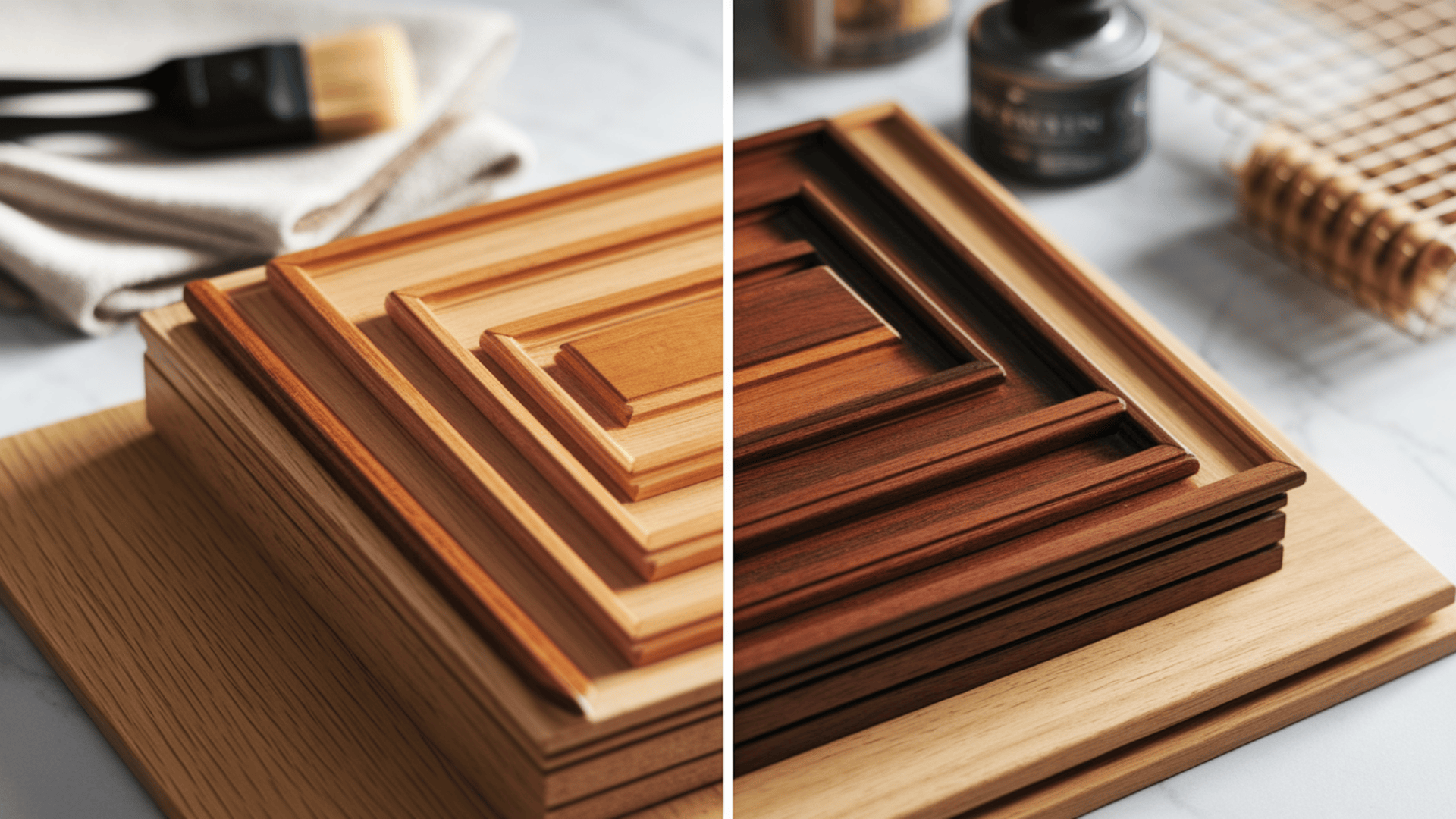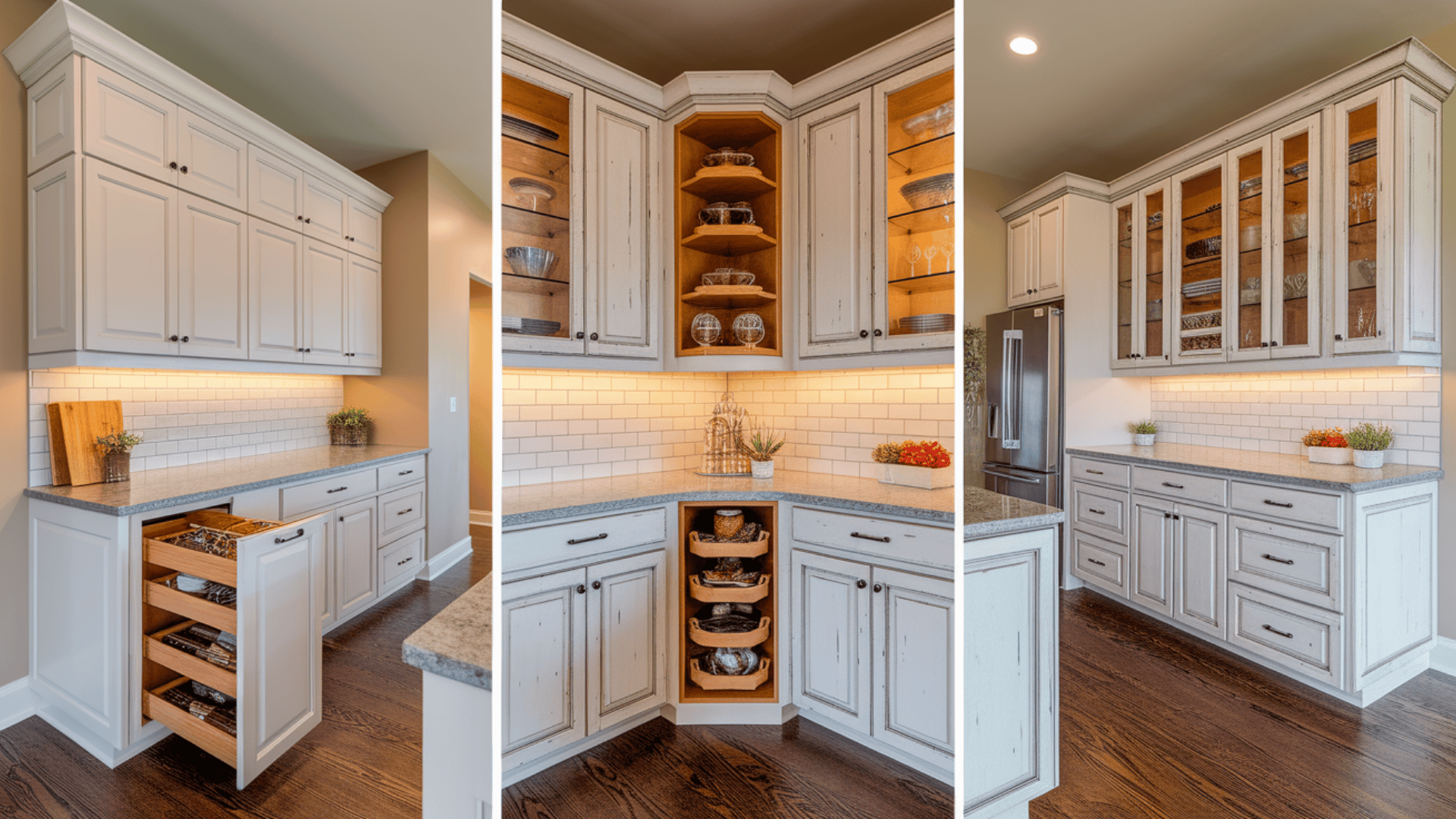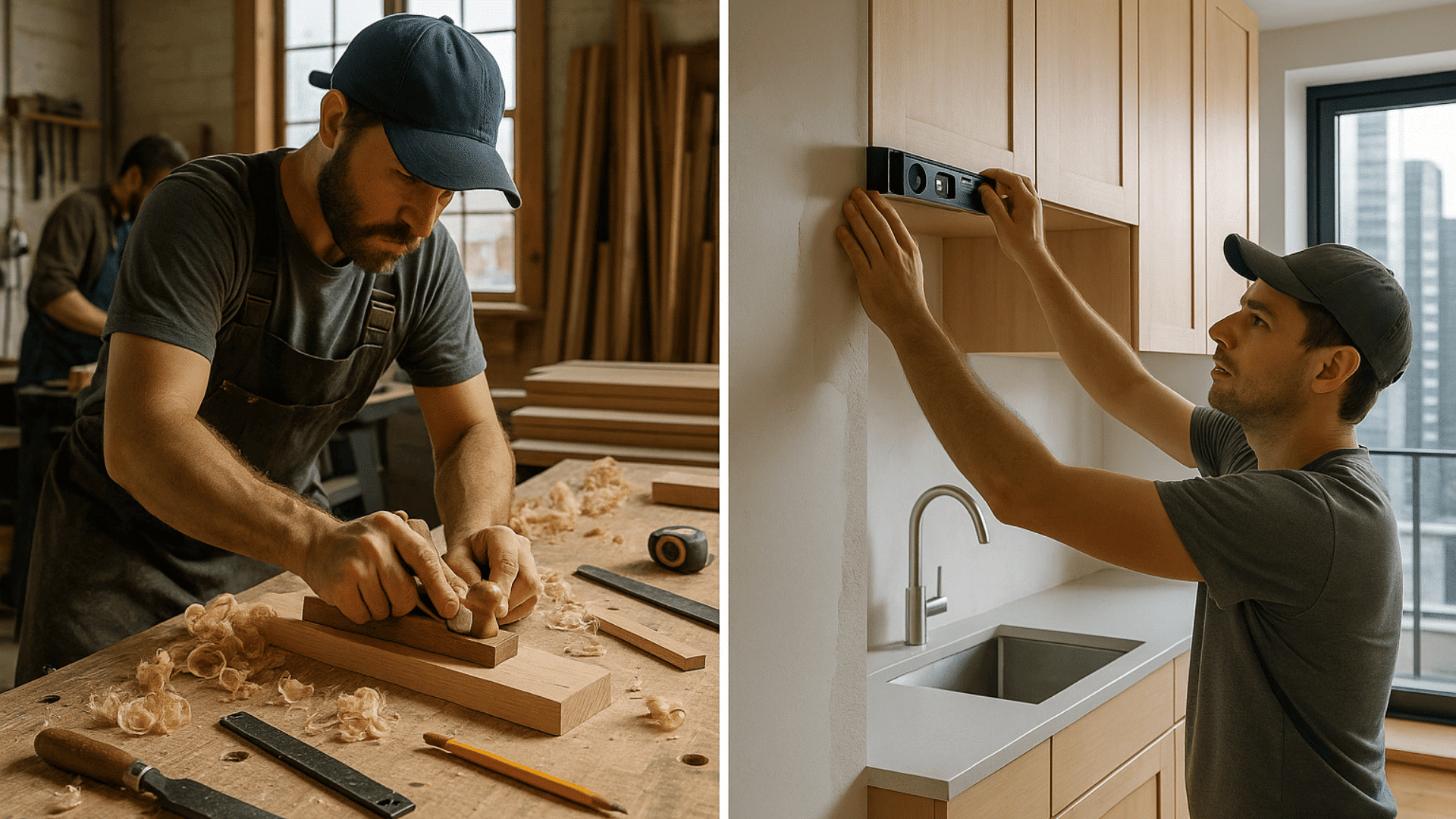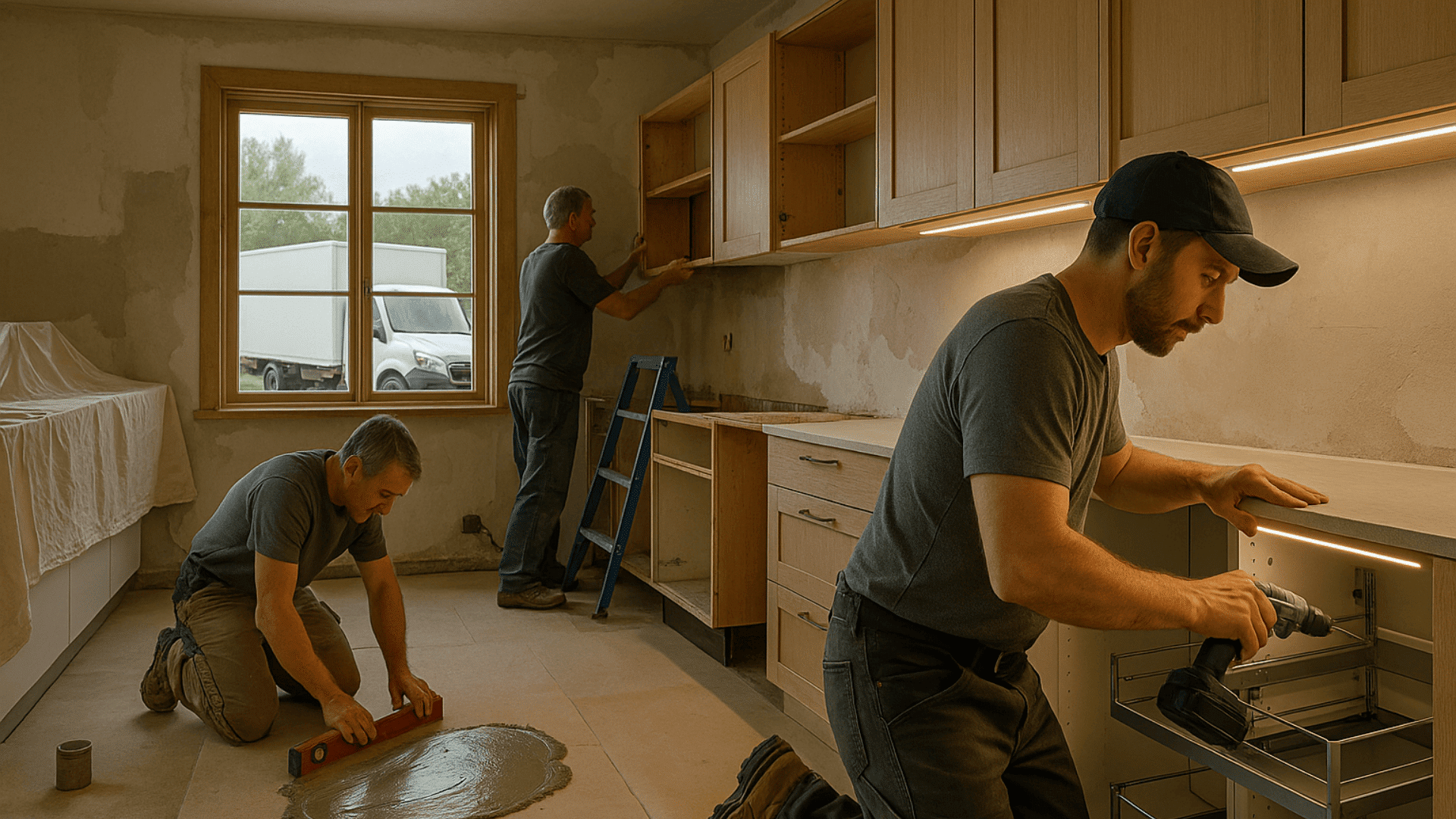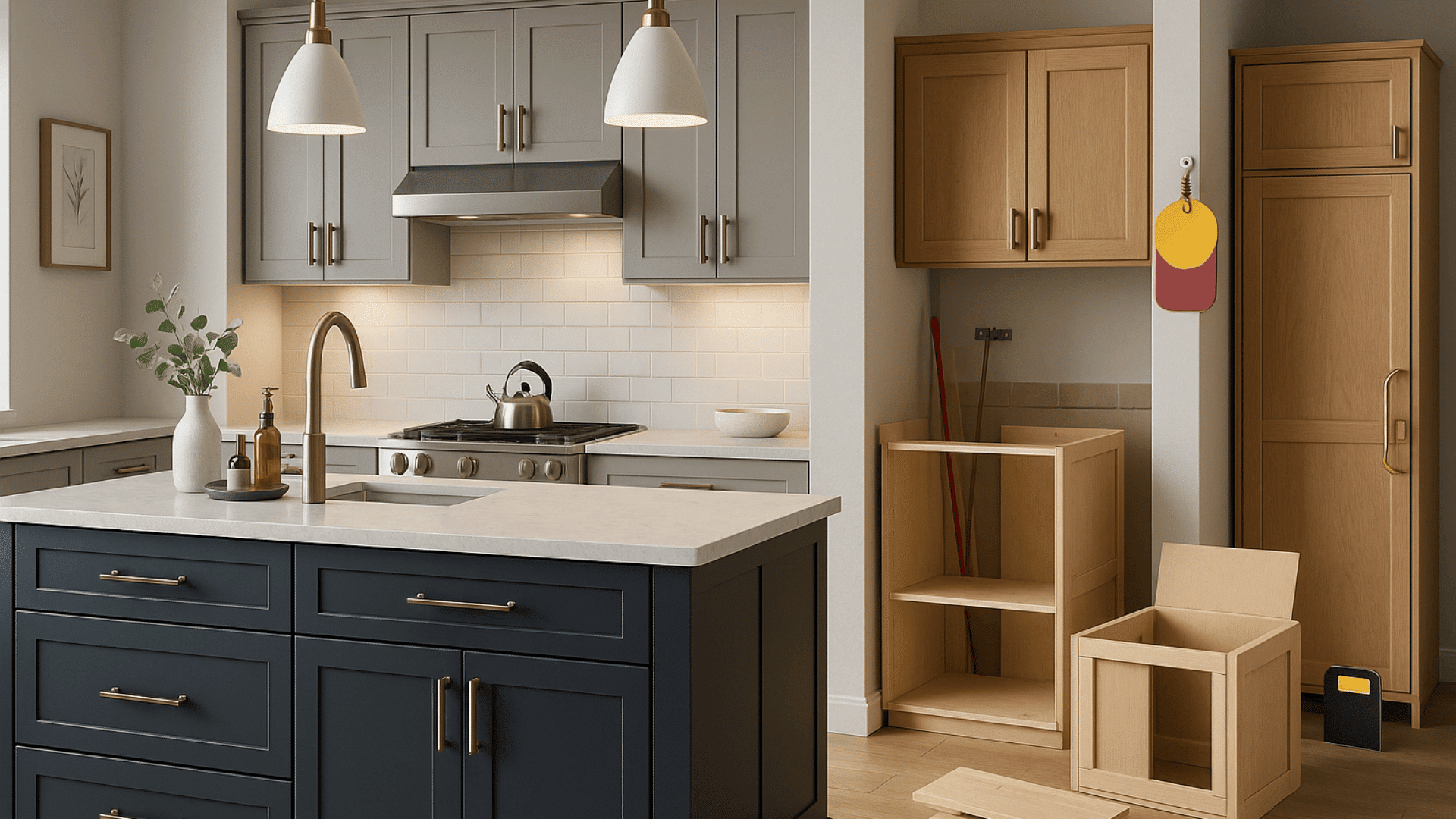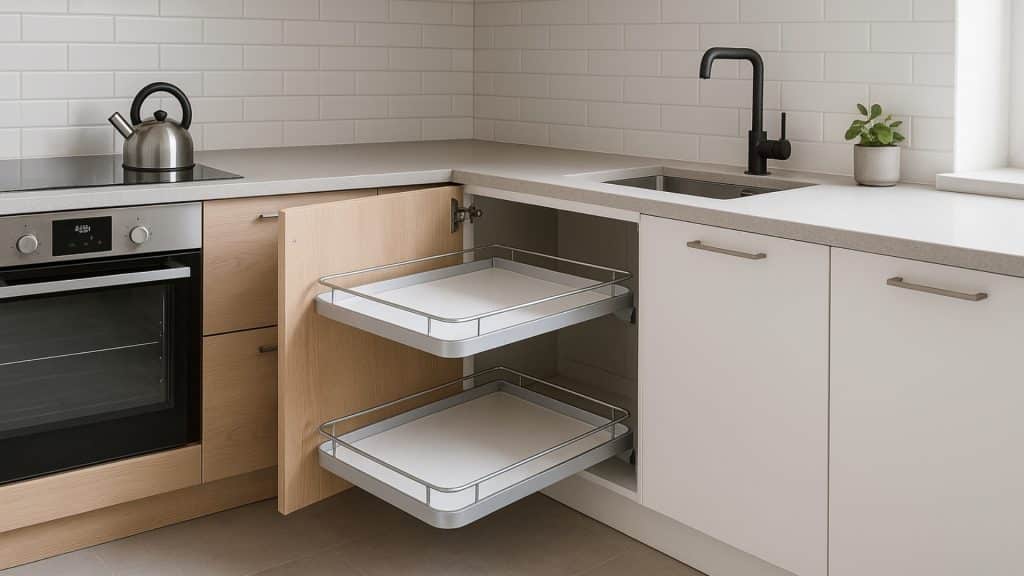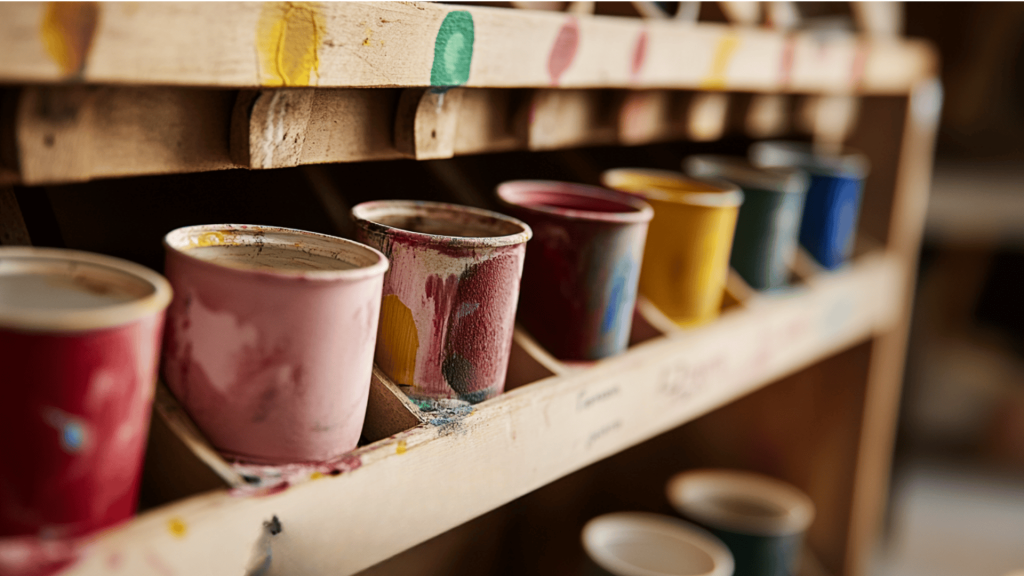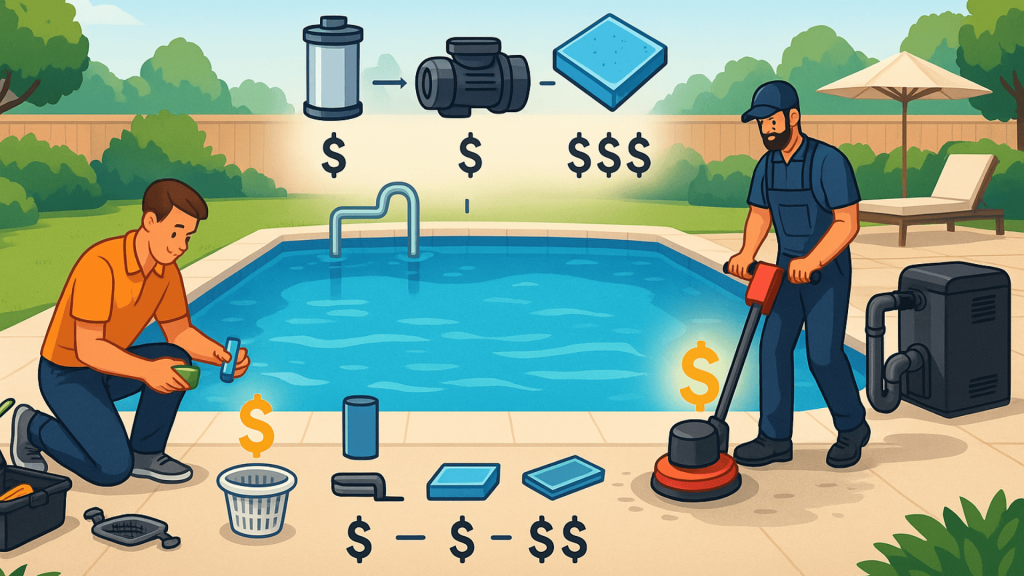Kitchen cabinet sticker shock hits almost every homeowner planning a renovation.
The prices seem outrageous at first glance, often consuming 25-40% of your entire kitchen budget.
But why such high costs for what looks like simple wooden boxes?
The truth involves multiple factors working together.
These include premium materials that last decades, skilled craftsmanship requiring years of training, complex installation needs, brand reputation, and customization options.
Understanding these cost drivers helps you make smarter decisions about where to invest and where to save.
Let’s break down what’s really behind those eye-popping cabinet prices and how you can get the quality you need without unnecessary spending.
The Real Reason Cabinets Cost So Much
Kitchen cabinets claim 25-40% of remodeling budgets, often shocking homeowners with their high prices.
Why so costly?
It comes down to several key factors working together.
Materials matter; solid woods like oak and maple cost more than particleboard, and wood prices have increased recently.
Skilled workers who build and install cabinets command good wages for their expertise.
Quality hardware contributes significantly—premium hinges, handles, and drawer mechanisms can add hundreds to your total.
Finally, installation gets complicated when dealing with uneven walls or unusual spaces.
Understanding these cost drivers helps you make smarter choices about where to save and where to spend when planning your kitchen project.
Premium Materials Equals Premium Pricing
Quality materials form the foundation of cabinet costs.
When you choose better materials, your price naturally increases.
This relationship between quality and cost appears throughout the cabinet world, from wood types to hardware choices.
1. Wood Types Shape Your Budget
Solid hardwoods cost far more than engineered options.
- Oak brings durability and classic grain patterns.
- Maple offers smooth, tight grain for modern looks.
- Cherry provides rich, warm tones that grow more beautiful with age.
- Walnut commands top prices for its dark, striking appearance.
In contrast, budget materials like particleboard and MDF (Medium-Density Fiberboard) cut costs significantly but may not last as long or handle moisture well.
2. Hardware Quality Affects Longevity
Budget hinges might last 5-7 years with regular use, while premium options can function perfectly for 20+ years.
Self-closing mechanisms, full-extension drawer slides, and built-in organizers quickly add hundreds to your total.
Quality hardware makes daily use more pleasant and reduces the need for repairs or replacements.
Metal components with proper coating resist corrosion and maintain smooth operation even with heavy daily use.
3. Finish Techniques Impact Costs
Multi-step finishing processes require skilled labor.
Hand-rubbed stains, protective sealants, and specialty glazes need multiple applications with drying time between each.
Factory finishes often include UV protection that helps prevent fading over time.
Catalyzed finishes provide superior moisture and chemical resistance compared to simple stains.
These quality differences justify higher prices through better performance and longer cabinet life.
4. Material Cost Comparison
Wood type selection dramatically impacts your bottom line. This table shows typical price differences per cabinet box:
| Material Type | Cost Per Cabinet Box | Relative Durability | Moisture Resistance |
|---|---|---|---|
| Particleboard | $50-100 | Low | Poor |
| MDF | $75-150 | Medium | Fair |
| Plywood | $100-200 | High | Good |
| Oak | $200-350 | Very High | Very Good |
| Maple | $250-400 | Very High | Very Good |
| Cherry | $300-500 | Very High | Excellent |
| Walnut | $400-700 | Very High | Excellent |
These material choices form your first and most important cost decision when planning cabinet purchases.
Customization and Design Complexity Drive Up Prices
When cabinets must fit unusual spaces or include special features, costs climb quickly.
The more your kitchen veers from standard measurements and simple designs, the more you’ll pay.
Cabinet construction falls into three main categories, each with distinct price points:
- Stock cabinets come in fixed sizes with limited options, typically 20-30% less expensive than other types
- Semi-custom options allow some size adjustments and more finish choices
- Full custom cabinets cost 60-80% more than stock, but provide exactly what you want
Special storage solutions add both function and cost to your kitchen.
Corner solutions that maximize awkward spaces use complex mechanisms that add $200-500 per unit.
Specialty Sizing for Challenging Spaces
Non-standard heights, depths, or widths require a complete redesign of cabinet components.
Angled walls, low ceilings, or spaces for special appliances need careful planning and unique construction methods that boost costs.
Finish complexity multiplies work hours significantly.
Two-tone kitchens require careful masking and multiple finish applications.
Distressed or antiqued looks need skilled handwork to create consistent yet natural-looking wear patterns.
Built-in lighting systems mean added wiring, planning, and specialized construction.
Labor, Craftsmanship, and Installation Costs
The hands that make and install your cabinets account for a substantial portion of the total costs.
This human element introduces variables based on skill level, location, and project complexity.
Regional Cost Variations
Where you live dramatically impacts what you’ll pay for the same quality of cabinets.
Labor rates vary by market conditions, cost of living, and local demand for skilled trades.
Rural areas typically offer the lowest labor rates, while major urban centers command premium prices.
These regional differences can account for 20-40% of your total project cost.
Installation Challenges Add Expenses
Few houses have perfectly square walls or level floors. Installers must make adjustments on-site to ensure cabinets fit correctly and function properly.
Old homes present particular challenges that might require structural work before cabinets can be installed safely.
When walls need repair, floors need leveling, or plumbing must be relocated, these services add to your bottom line.
Such modifications often aren’t included in initial cabinet quotes but become necessary during installation.
Hidden and Variable Costs Most People Overlook
Beyond the basic cabinet price, several additional costs often surprise homeowners.
These “hidden” expenses can significantly impact your total project budget.
Delivery fees vary based on distance and accessibility.
Rural locations or homes with difficult access may incur surcharges.
Some companies charge $200-500 for delivery regardless of location.
The removal and disposal of old cabinets typically costs $300-700, depending on the kitchen size and local disposal fees.
This service often requires separate scheduling and payment.
Preparation and Modification Work
Many homes need wall repairs, floor leveling, or plumbing adjustments before new cabinets can be installed.
These preparatory steps add costs that weren’t part of the original cabinet quote:
- Plumbing modifications: $200-800
- Electrical updates: $300-1500
- Wall repairs: $200-600
- Floor leveling: $300-1200
Cabinet accessories and add-ons quickly increase your total.
Under-cabinet lighting, pull-out trash systems, and specialty drawer organizers each add $100-500 to your project.
Time delays carry both direct and indirect costs.
When custom orders take 8-12 weeks instead of the expected 4-6 weeks, you might pay for temporary kitchen solutions or restaurant meals longer than planned.
Budget-Smart Alternatives That Still Offer Style
Finding ways to reduce cabinet costs doesn’t mean sacrificing quality or appearance.
Smart shoppers can save substantially with strategic choices.
Ready-to-Assemble Options
RTA (ready-to-assemble) cabinets typically cost 30-50% less than pre-assembled units.
Many come with the same materials and features as their more expensive counterparts, but require assembly time:
- Mid-grade RTA kitchen: $3,000-7,000
- Comparable pre-assembled kitchen: $5,000-12,000
Modern RTA cabinets feature better construction methods than earlier generations.
Many use dovetail joints, solid wood doors, and quality hardware despite their lower price point.
Timing your purchase around sales periods can yield significant savings.
January clearance sales and holiday promotions typically offer 10-30% discounts on cabinet lines.
Cost Comparison: Mixed Cabinet Strategy vs. Full Custom
This table shows how strategic mixing of cabinet types can reduce total costs while maintaining quality where it matters most:
| KITCHEN AREA | ALL CUSTOM APPROACH | STRATEGIC MIX APPROACH | POTENTIAL SAVINGS |
|---|---|---|---|
| Island/Focal Point | $5,000-8,000 | $5,000-8,000 (Custom) | $0 |
| Main Wall Cabinets | $10,000-15,000 | $6,000-9,000 (Semi-custom) | $4,000-6,000 |
| Pantry/Utility Areas | $4,000-7,000 | $2,000-3,500 (Stock) | $2,000-3,500 |
| Specialty Features | $3,000-5,000 | $3,000-5,000 (Custom) | $0 |
| Total Project | $22,000-35,000 | $16,000-25,500 | $6,000-9,500 |
This strategic approach maintains quality where guests see and you interact most, while cutting costs in less critical areas.
The resulting kitchen still looks high-end but costs significantly less.
Final Thoughts
Cabinet costs reflect a balance between materials, craftsmanship, function, and appearance.
Quality cabinets serve as your kitchen’s backbone for 20-30 years, far longer than most home components.
Their daily impact on functionality and home value justifies careful consideration.
Focus your budget on aspects that truly matter while finding savings in less critical areas to create a beautiful, functional kitchen without breaking the bank.
Invest wisely where it counts, because your cabinets work harder than anything else in your home.
Comment below with your cabinet budget tips!
How did you balance quality and cost?
We’d love to see your kitchen and hear what choices made the biggest impact!

